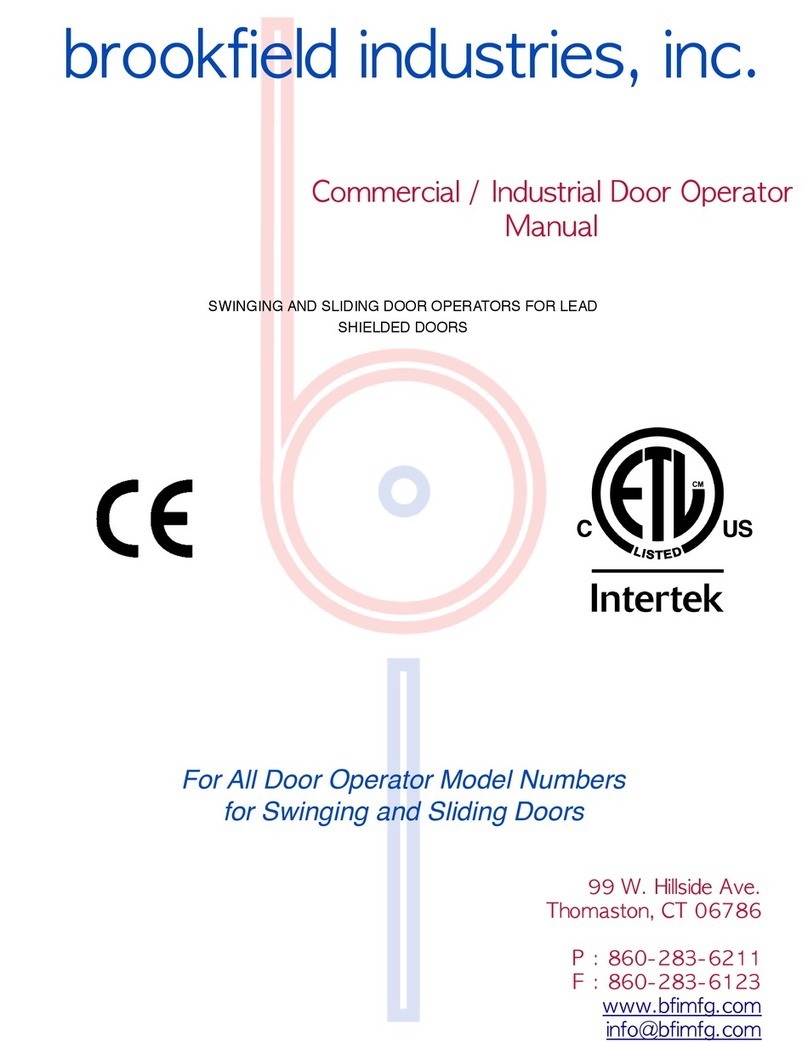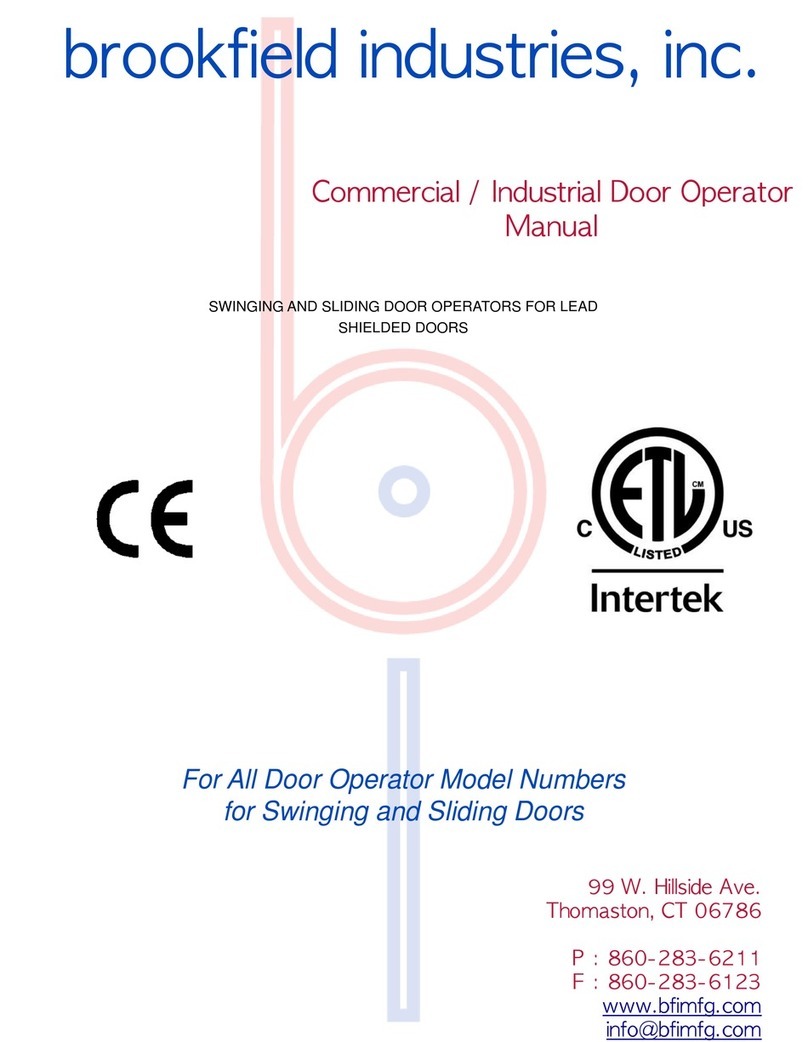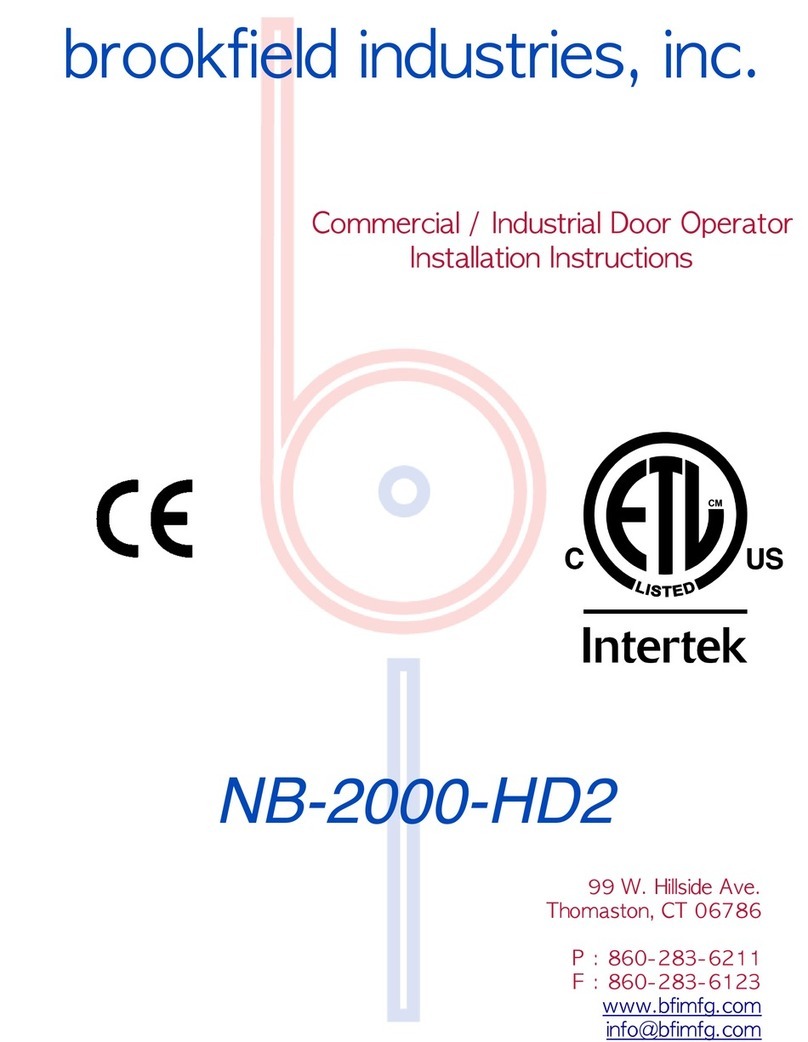with the elimination of the external speed pots and the associated wiring. The
new multi-speed board features control of (4) independent speeds. The NB-500
now has the flexibility of controlling separate latch check(creep close) speeds
(Preset 1) and back check(creep open) speeds (Preset 2) as well as close
speeds (Preset 3) and open speeds (Preset 4). The motor control also features
additional trimpots, which greatly improve the performance of the drive and
motion profile of such heavy doors. The DB (Dead Band) trimpot sets the
amount of main speed trimpot rotation to initial output voltage and controls the
amount of delay before regeneration starts. If not properly set, the motor may
oscillate or continue to hum. The RESP (Response) trimpot adjusts the dynamic
response of the system; therefore, increasing this setting will increase response
time( if set too high , unstable operation may result). The IR Comp trimpot
determines the amount in which the motor speed is held constant as the motor
load changes. For example, if set too low, the motor may not obtain the desired
speed fast enough or not at all. If set too high, the motor may oscillate. The
RCL (Reverse Current Limit) trimpot and FCL (Forward Current Limit) trimpot
adjusts the armature current limit or motor torque in their respective directions.
When properly set, the operator will have sufficient torque to operate in both
directions, while at the same time limiting the current to the motor in order to stall
and reverse the door’s direction so that Entrapment Protection requirements
will be met (this eliminates the need for unreliable and hard to adjust devises
such as a manual or electromagnetic clutch). The MAX (maximum speed)
trimpot adjusts the voltage or speed of the motor in the forward and reverse
directions. The FACC (Forward Acceleration) trimpot adjusts the acceleration
time in the forward direction as a function of the maximum rated motor speed. It
also controls the Reverse Deceleration time. The RACC (Reverse Acceleration)
trimpot adjusts the acceleration time in the reverse direction as a function of the
maximum rated motor speed. It also controls the Forward Deceleration time.
Overload Protection for the DC motor is provided by using the appropriate line
fuse to the 110VAC power supply of the motor control (see wiring diagram) and
by the proper setting of the FCL and RCL trimpots, which controls the amount of
DC current to the motor in both directions.
Drive Train:
A 5:1 Right Angle Worm Gear Reducer (with a center distance of 2.06”)
provides the high output torque necessary to operate these heavy doors. A
heavy-duty flexible coupling joins the worm gear to the 102:1 In-Line Helical
Gear Reducer; thus, substantially reducing torque before being coupled to a 1/8
HP 90VDC Permanent Magnet Motor, 1750 RPM TENF.
Battery Backup (option):
When power is interrupted, and if the door is in any position other than fully open,
the battery backup will be activated and provide low voltage DC power directly to
the motor. The system is designed to open the door once for each power
interruption at a constant speed. This system is not designed to open and close































